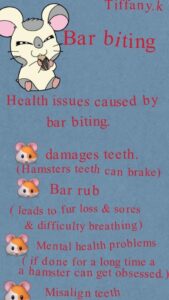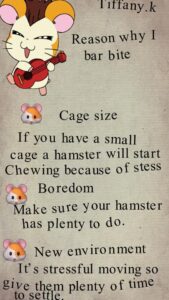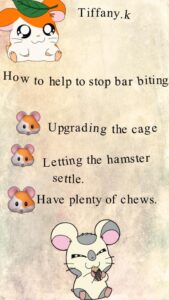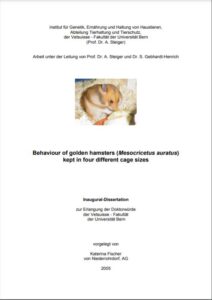Bar Biting is bad for hamsters. It is a common reaction to boredom and can cause misaligned and damaged teeth. In extreme cases, the constant vibrations can cause brain damage. Often hamsters chew the bars if there is nothing else to gnaw on, no stimulation, or their cage is too small. They can become obsessed causing mental health problems and depression. If you have a cage over the recommendations, a 11″+ wheel, and plenty of things to do and they still bite the bars, then you might want to consider putting them in a tank or bin cage to stop it. The Royal Veterinary College recommends a Glass Tank instead of a Cage as you can provide a deep layer of bedding, allowing your hamster to make a Burrow like they would in the wild. Also, No Bars means No Bar Biting.

Studies have shown that “hamsters in small cages knawed significantly longer and more frequently” and that “wire gnawing might be an attempt to escape from the cage” this research can be seen on our Hamster Cages Page.
It’s sad to see a hamster when it’s constantly focused on trying to escape it’s cage. If you provide a bigger home (at least 100cm x 50cm of unbroken floor space) and plenty of activities to do then it’s very likely that your hamster will enjoy and love it’s surroundings and bar chewing will become far less frequent.

Top Tip: Some hamster keepers recommend 150cm as a minimum length and will use a glass tank or an IKEA Detolf which is 163cm long, its a glass cabinet which can be placed horizontally on the floor or put on a long stand, and used as a tank. The price varies between £40 -£60 and is a far better way to spend your money then paying the same price for a tiny cage. Also there are no bars so you will completely avoid the bar biting issue. For inspiration some amazing hamster cages can be seen here.



